Worried about plastic pollution and its global impact? Many businesses struggle to find the right sustainable packaging solution. I know how tricky this can be.
People globally use diverse eco-bags, from natural cotton and durable jute to innovative recycled materials like rPET. Choices often reflect local culture, laws, and practical needs, aiming to reduce environmental impact and support a greener future.
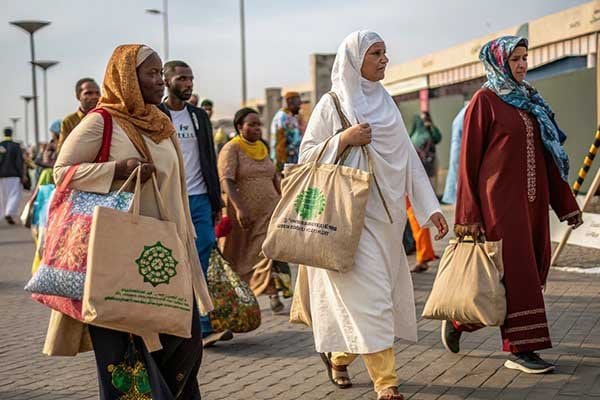
As I’ve worked with businesses worldwide, I’ve seen firsthand that there isn’t one perfect эко-сумка. It’s fascinating how different regions approach sustainability. Let’s explore why bag preferences vary so much by country.
Why Do Bag Preferences Vary by Country?
Does finding the right eco-bag for your business feel overwhelming? It’s not just about what you like; global customs play a big role. Different places have different needs.
People choose their eco-bags based on local culture, existing laws, and daily habits. What works in one country might not be practical in another, showing how global solutions need local understanding.
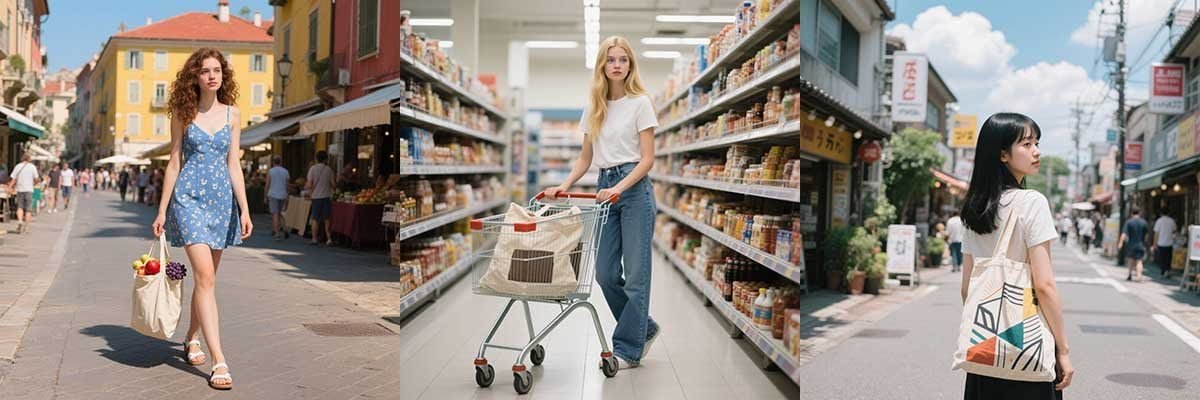
Cultural Impact
I’ve learned that culture deeply shapes how people view and use bags. For example, in Europe, I’ve noticed a strong leaning towards natural, reusable canvas bags. They often fit a more understated, everyday style, and people carry them for various daily tasks. My experience shows that these choices reflect a cultural preference for durability and a classic look. Over in the United States, I see a much stronger preference for very large capacity shopping bags. This makes sense when you think about how many Americans do their grocery shopping, often buying a week’s worth of items at once. My clients there often ask for multi-pocket designs, showing a need for organization within that large capacity. This tells me that convenience and bulk carrying are key drivers. In Asia, on the other hand, my team has seen a rise in demand for foldable eco-bags. People value these because they are light and easy to carry, fitting into a lifestyle where public transport is common and space is at a premium. This desire for portability truly impacts design.
Legal Frameworks
Laws also play a huge role. Countries with early and strict plastic bans1, like many in Europe, pushed people and businesses to find alternatives quickly. This created a strong market for natural fabrics2. I’ve seen how this fast shift made sustainable options a standard. In other regions, where plastic bans are newer or less strict, the push might be slower. Businesses look for cheaper, easy-to-find options first. My work involves helping them navigate these local rules.
Consumer Habits
Daily routines influence bag choices. Some people prioritize design, making their eco-bag a fashion statement. Others just want something practical that can carry heavy items without breaking. And for some, the material itself is most important, whether it’s biodegradable or made from recycled content. My insight is that understanding these habits helps businesses choose the right product.
What Reusable Bags Are Popular in the US and Europe?
Are you wondering what types of reusable bags truly stand out in Western markets? It’s not just about being eco-friendly; practicality and style are equally important.
In both the US and Europe, canvas and jute bags are highly popular choices. They offer a great mix of durability and eco-consciousness, suitable for everything from daily errands to larger shopping trips.
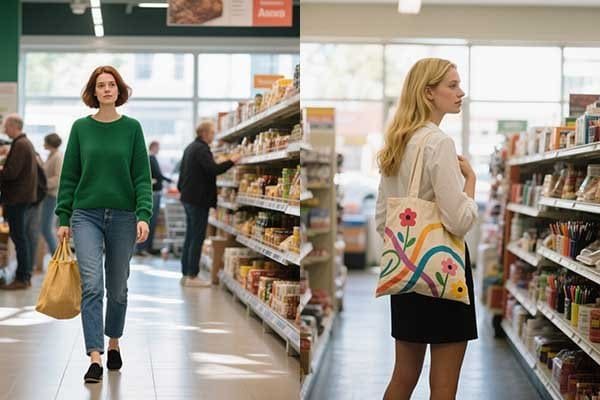
Canvas: The Go-To Choice in the West
From my perspective, холщовые сумки are universally loved across Europe and the US, but how they are used can differ. In Europe, I’ve noticed people often choose regular-sized canvas bags. They carry these daily for small errands, quick trips to the market, or simply as part of their everyday ensemble. It’s about fitting into a routine where convenience and a classic look are key. My European clients often ask for bags that are both durable and have a timeless appeal, reflecting this everyday use. Over in the United States, the demand for canvas bags shifts towards much larger capacities. I’ve seen how US consumers use these big, sturdy bags primarily for supermarket shopping, needing to haul large quantities of groceries. They often look for designs with multiple pockets, which helps them organize different items, like produce, frozen goods, and personal belongings, all within one large bag. This difference really highlights the varying shopping habits in these two regions, where European trips are often smaller and more frequent, and US trips are often larger and less frequent.
Jute: A Sustainable Favorite
Джутовые мешки are another big hit, particularly as shopping bags and wine bags. I’ve observed their popularity for a long time. Jute is strong, biodegradable, and grows sustainably. This makes it a great choice for businesses who care about their environmental footprint. My clients often pick jute for its natural look and robust feel. It’s perfect for carrying heavy items without worry. I’ve seen it used for everything from market produce to specialized wine carriers, showing its true versatility.
Non-Woven: The Supermarket Staple
Then there are нетканые мешки. These are very common as supermarket shopping bags. While they might not have the natural feel of cotton or jute, they are lightweight, strong, and reusable. Many large retailers use them because they are cost-effective and can be easily branded. I’ve helped many businesses source these, especially when they need a reliable, affordable option for their customers to reuse many times. They offer a good balance of cost, durability, and a step away from single-use plastic.
How Do Asians Choose Their Eco-Friendly Bags?
Are you curious about the diverse eco-bag choices across Asia? It’s a fascinating landscape, shaped by unique regulations, cultural tastes, and daily life.
Asian consumers often prioritize convenience and design in their eco-friendly bags, from foldable options in Japan to fashion-forward choices in Korea, and practical solutions driven by new plastic bans in China.
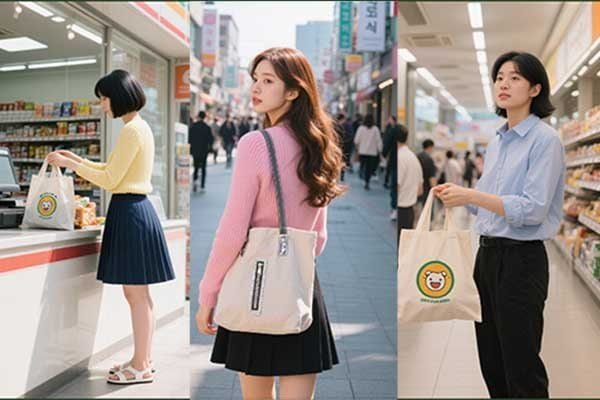
China’s Approach to Green Packaging
In China, I’ve seen major changes due to the plastic ban. Supermarkets are quickly shifting from plastic bags to options like PLA (polylactic acid) bags, rPET bags, or non-woven bags. This is a huge step towards sustainability, and it’s something I help my clients navigate. Beyond that, many people in China now bring their own foldable shopping bags, which shows a growing personal commitment to reducing waste. It’s also interesting to note the rise of non-woven bags for food delivery. With the booming e-commerce and delivery sectors, finding sustainable solutions for takeout packaging is a big challenge. I’ve been working on options that are both eco-friendly and practical for businesses and consumers. My insight is that the sheer scale of the market means even small changes can have a huge impact.
Design-Driven Choices in Japan and Korea
My observations in Japan and Korea highlight a different focus: design. For people there, an eco-bag is often more than just a functional item; it’s a fashion accessory. In Japan, I’ve noticed a strong preference for foldable shopping bags. People often carry these with them, ready to use, as part of a cultural effort to refuse plastic bags. They embrace the idea of ‘no plastic island,’ taking personal responsibility. It’s a very practical yet mindful approach. In South Korea, the demand for canvas bags is very high. However, their choice is often driven by aesthetics and brand identity. They seek out bags that are part of a designer collection or reflect a particular style, making the eco-bag an integral part of their outfit. This emphasis on appearance means that the quality, finish, and overall look of the bag are extremely important to consumers.
Southeast Asia’s Practical Solutions
In Southeast Asia, I’ve seen a blend of practical and quality-driven choices. For everyday convenience stores, нетканые мешки or Polyester bags are common. These are affordable and meet the basic need for reusable options. However, for businesses looking for higher quality or a more premium feel, хлопчатобумажные мешки are a popular choice. They offer durability and a natural aesthetic that many consumers appreciate. Additionally, paper bags are also used, especially where they can be sourced affordably and recycled easily. My work with clients in this region often involves balancing cost-effectiveness with the increasing demand for sustainable materials. The market here is diverse, with solutions ranging from basic reusables to more sophisticated, higher-value options, reflecting a growing environmental awareness across the region.
What Makes Certain Bags Stand Out in Other Regions?
Have you ever wondered how unique regional needs drive eco-bag innovation? Beyond common choices, certain bags truly shine in specific parts of the world.
From strong jute bags in South Asia to innovative plant-based textiles and upcycled creations, local materials and ingenuity lead to remarkable eco-friendly bag solutions worldwide.
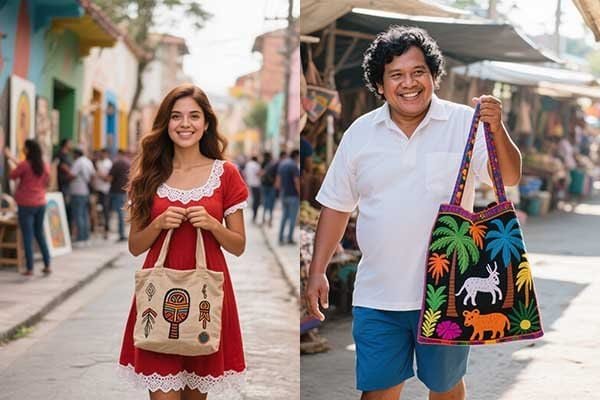
The Strength of Jute in South Asia
In South Asia, particularly countries like India and Bangladesh, jute bags really stand out. I’ve seen firsthand how highly valued they are due to their robust nature. Джут, often called the "golden fiber," is incredibly strong, making it perfect for carrying heavy goods. Beyond its strength, it’s also completely biodegradable, meaning it breaks down naturally without harming the environment. From a sustainability perspective, jute is a champion because it’s easily renewable and grown without needing a lot of pesticides or water. My experience tells me that these qualities make jute a preferred choice for everything from daily market bags to large-scale agricultural packaging. It’s not just a bag; it’s a reflection of local resources and a sustainable tradition.
Local Innovations: From Bayong to Bananatex
My work has also introduced me to some truly unique local innovations. For example, in the Philippines, the traditional ‘bayong’ is a wonderful example of a sustainable solution. These bags are hand-woven from local plant fibers like buri, pandan, or abaca. They are a beautiful and durable alternative to plastic, deeply rooted in the local culture. In Bangladesh, I’m fascinated by the ‘Sonali Bag.’ This is a compostable bioplastic made from cellulose-based jute polymer, designed to directly replace single-use plastic bags. It shows incredible ingenuity in creating new materials from existing resources. Then there’s Bananatex® bags, which are produced by the Swiss company QWSTION. These innovative bags are made from the fibers of banana plants, a plant-based textile that’s gaining global recognition for sustainable bag production. It’s exciting to see how global companies are looking to natural fibers for the future.
Upcycling and Community Efforts
Finally, I’ve been inspired by the upcycling efforts in places like Ghana with ‘Trashy Bags Africa.’ They take discarded plastic sachets and transform them into reusable shopping bags and accessories. This initiative doesn’t just clean up waste; it also creates local employment and raises awareness about plastic pollution. It shows how communities can turn a problem into a solution, proving that creativity and purpose can make a huge difference. From my perspective, these regional examples highlight that sustainable packaging isn’t just about new materials; it’s also about innovative thinking, using local resources, and empowering communities.
How Do Laws and Habits Shape Bag Choices?
Have you considered how much laws and daily routines influence our bag choices? It’s a powerful combination that drives global shifts in packaging.
Plastic bans are undeniably key drivers in popularizing eco-bags worldwide. These regulations, combined with evolving consumer habits, are pushing societies away from single-use plastics towards sustainable alternatives.
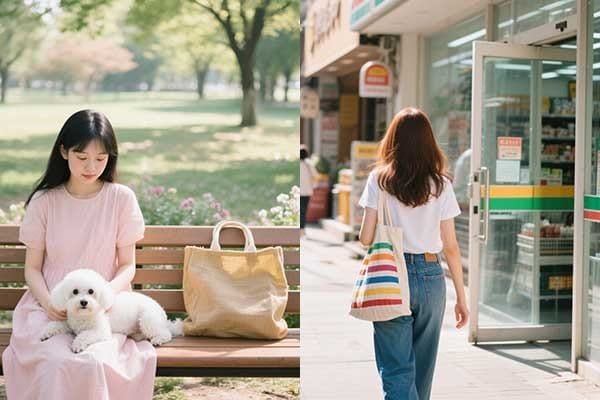
The Power of Plastic Bans
From my perspective, plastic bans are arguably the single most important factor driving the adoption of eco-bags globally. When a government passes a law banning or heavily taxing single-use plastic bags, businesses and consumers are forced to find alternatives immediately. I’ve seen this happen in countless regions, from Europe to parts of Asia. This sudden need creates a huge market for reusable bags made from various materials. My work involves helping businesses quickly adapt to these changes, ensuring they have access to compliant and practical solutions. These bans don’t just reduce plastic waste; they fundamentally shift the entire market towards sustainable options. It’s a powerful top-down approach that has profound bottom-up effects on daily life and business operations.
Shifting Consumer Habits
While laws provide the push, changing consumer habits provide the pull. Initially, people might adopt eco-bags out of necessity due to bans. However, over time, carrying a reusable bag becomes a norm. I’ve observed this shift firsthand. As environmental awareness grows, more consumers actively seek out businesses that offer sustainable packaging. They look for bags that align with their values, whether that’s durability, aesthetic appeal, or specific material properties like biodegradability. My belief is that this growing consumer demand for responsible choices encourages more businesses to invest in eco-friendly bags, even beyond legal requirements. It’s a positive cycle where awareness drives demand, and demand drives innovation.
Economic Considerations
Economic factors also play a critical role. In some regions, the immediate concern might be affordability. My insight is that not all areas can immediately transition to expensive, high-tech eco-materials. For many, the focus is on finding cheap yet environmentally friendly plastic bag alternatives. This means exploring options like basic non-woven bags or simple paper bags. However, as economies develop and environmental awareness grows, people are often willing to pay a bit more for higher quality or more sustainably certified options. My goal is to offer a range of solutions that fit different budgets while still making a positive environmental impact. It’s about finding that sweet spot where cost, quality, and sustainability meet.
What Global Trends Are Emerging in Green Bags?
Are you curious about the cutting-edge trends shaping the future of eco-friendly bags? Beyond traditional options, exciting innovations are emerging worldwide.
Emerging global trends in green bags include the widespread adoption of recycled materials, the rise of the stylish "forever tote," and groundbreaking plant-based solutions, all pushing sustainable packaging forward.
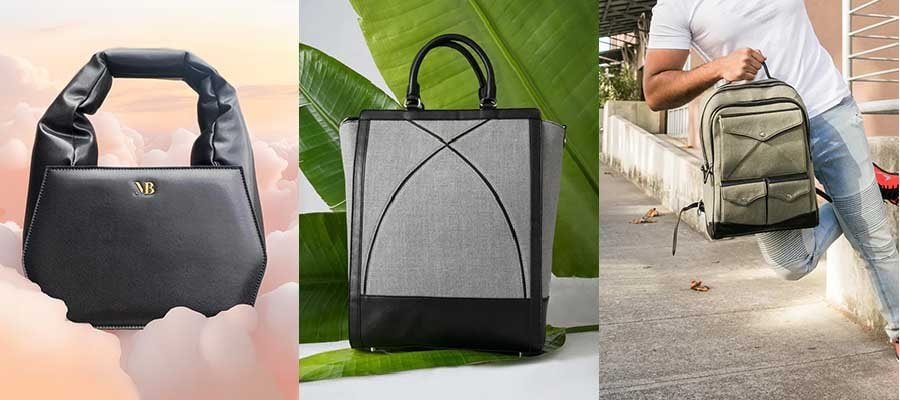
Rise of Recycled Materials
I’ve seen a huge surge in popularity for bags made from recycled materials. Recycled polyester (rPET) and recycled nylon are fantastic because they turn waste, like plastic bottles, into durable, lightweight, and often water-resistant bags. My clients love these for their versatility and low environmental impact. Similarly, bags made from recycled cotton or wool help tackle textile waste while maintaining softness and strength. This trend is about closing the loop and giving new life to materials that would otherwise end up in landfills. It’s a very practical way to be eco-conscious.
The "Forever Tote" Phenomenon
Another interesting trend I’ve observed is the rise of the canvas "forever tote." These are typically durable, sometimes over-branded calico bags with reinforced bases. They’ve become a fashion statement, often seen carried by stylish individuals. While they’re meant to be reused endlessly, which is great, critics sometimes point out that their production impact needs to be offset by frequent use. My perspective is that if these bags genuinely replace many single-use plastics over their lifetime, they are still a positive step. It’s about encouraging people to invest in quality and reuse.
Innovative Plant-Based Solutions
Finally, the innovation in plant-based materials is truly exciting. Hemp bags are gaining traction because hemp grows quickly, needs very little water, and no pesticides. It’s incredibly durable, making it a highly sustainable choice. I also see more mesh or produce bags made from breathable, compostable plant-based materials. These are perfect for groceries and bulk items. Beyond these, specialized brands like Eco-Bags Products and ChicoBag continue to lead with diverse styles made from organic cotton, recycled, and natural fibers. My mission is to help businesses access these cutting-edge options, aligning their brand with genuine sustainability.
Заключение
I have seen how diverse eco-bag choices are globally, shaped by culture, laws, and habits. Finding the right sustainable option depends on understanding these local needs.


